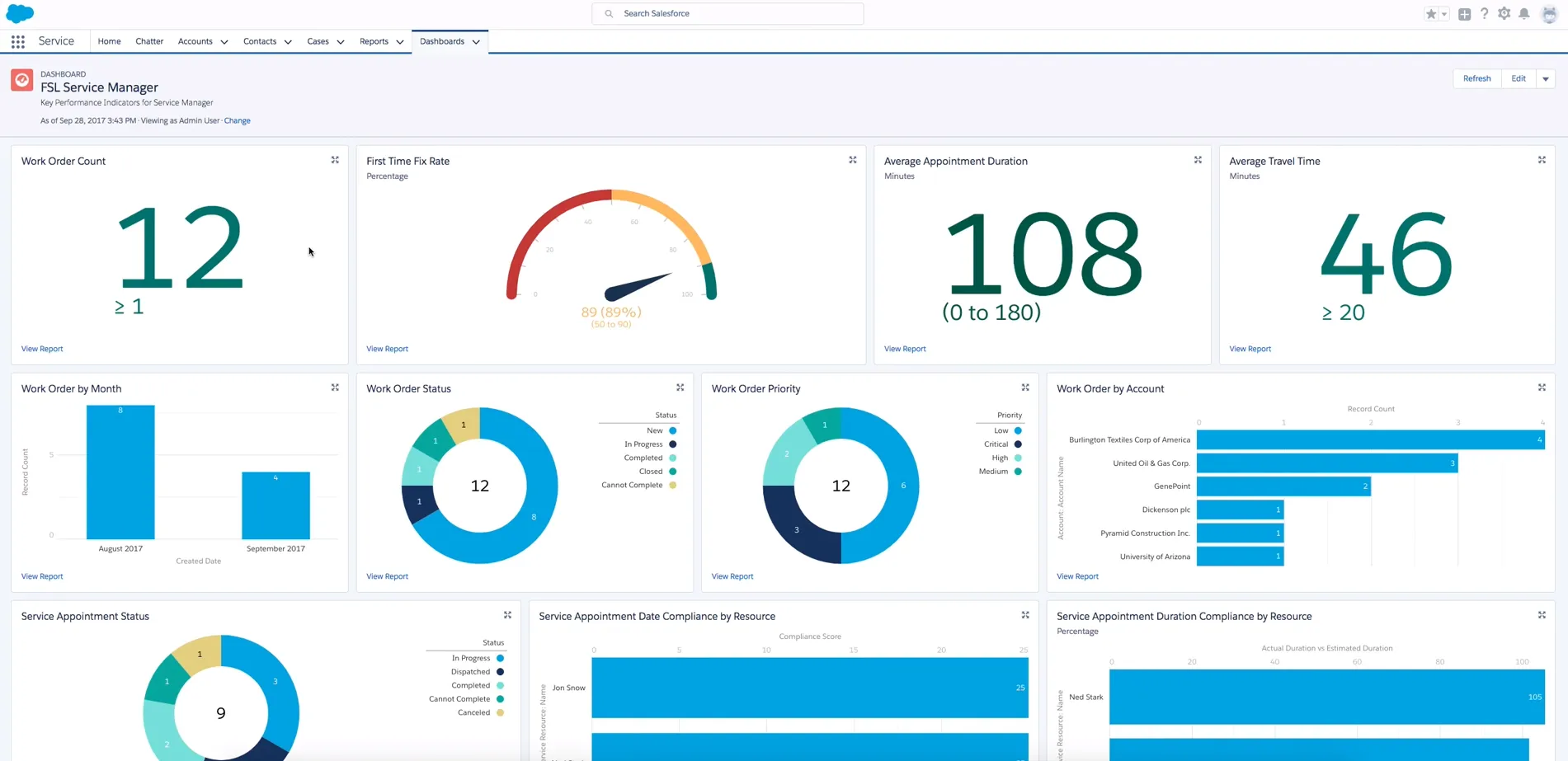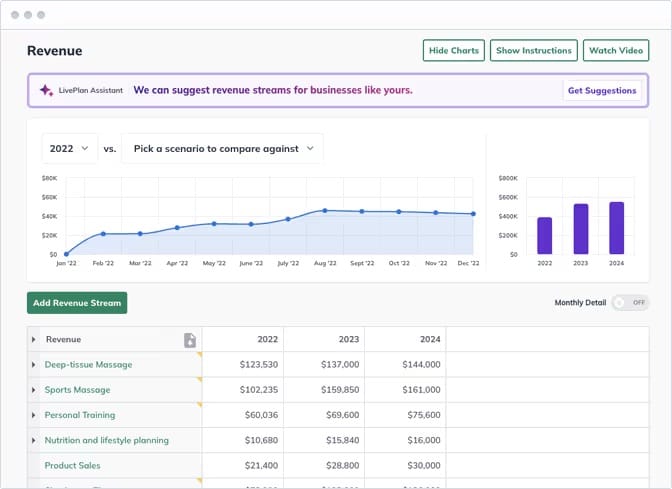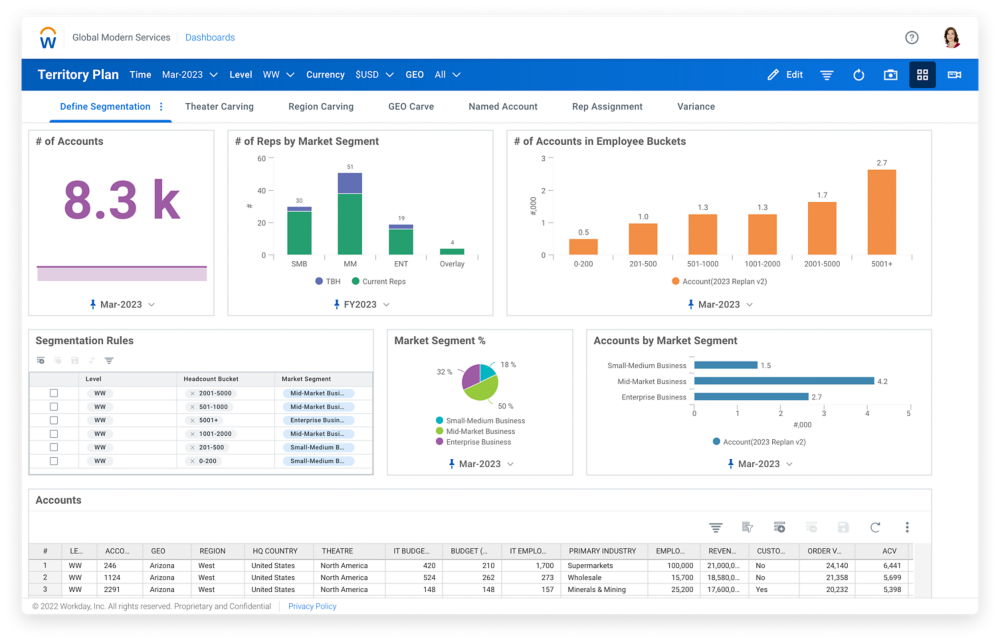A sales operations team seeks to improve sales cycle efficiency by streamlining sales processes, optimizing the tech stack, and motivating sellers.
“Sales operations is usually a position that works with sales leaders, or sales development leaders, because they're focused on the sales process from the beginning of the deal, until closing it.”
– Leore Spira, Director of Revenue Operations at Blink Ops
It’s a crucial supporting component of revenue organizations, but there’s more to it than that. Continue reading to discover:
- What sales operations is
- Why it matters
- Roles and responsibilities of sales operations
- How to structure a sales operations team
- 6 steps to build a sales operations strategy
- Must-have tools for sales operations
- Key sales operations KPIs
- Sales operations best practices
Sales operations (also known as sales ops) is a strategic support function that utilizes technology and data to support the sales team and increase efficiency.
Sales ops pros do this by strategically guiding the sales team with data, removing blockers, and incentivizing reps. Empowering the sales team effectively requires a balance of strategic and tactical work.
The function first appeared in the 1970s as a way to increase sales rep efficiency by removing data tasks from their workload, but the function has evolved and expanded dramatically since these humble beginnings.
Nowadays, sales operations cover these four pillars:
- Strategy – Helping to define a strategic sales strategy, including territory planning and coverage, and process optimization. Providing sales leaders the data they need to make informed decisions.
- Technology – Manage the sales tech stack and CRM to ensure sellers have the tools they need. Automate tasks, and ensure tools integrate well.
- Operations – Keeping the sales function running smoothly by taking on the admin burden of contracts, SLAs, and hiring top talent.
- Performance – Incentivizing sales teams through compensation planning, quota setting, and KPI tracking. Monitoring the sales team’s overall success.

Sales operations vs sales enablement
While some responsibilities may overlap between sales operations and sales enablement professionals, these are distinct sales support teams.
Sales ops typically focuses on improving sales processes, technology, and data insights, while sales enablement pros focus on improving sales skills through training, coaching, and knowledge sharing.
Sales operations vs revenue operations
Sales operations teams focus on optimizing the sales team’s productivity, while revenue operations pros focus on optimizing the entire revenue team’s productivity. That typically includes sales, marketing, and customer success.
In many organizations sales operations teams will transition to RevOps or report into a RevOps function.

Why sales operations matters
According to Salesforce, 82% of sales professionals say sales ops plays a critical role in growing their business. This comes as no surprise, as sales operations makes sellers' lives easier by optimizing sales processes and driving revenue growth.Implementing a sales operations function in your organization can:
- Lead to more informed decision-making (hello accurate sales forecasts 😍).
- Remove confusion and arguments between sales reps with clear sales territories and quotas.
- Streamline sales processes by removing red tape and implementing automation.
- Improve your hiring and recruitment processes by understanding how many reps you need to hit target, and the best skillsets for the role.
- Effectively motivate your sales teams with clear compensation plans.
- Leave your sales team more time to sell.
- Boost sales productivity by 20-30% (followed by a 5-10% boost every year).

Roles and responsibilities of sales operations
Sales operations teams cover a wide range of responsibilities, all aiming to increase sales productivity. Here are ten common responsibilities of a sales ops function:
Streamline the sales process
Sales reps spend a worryingly short amount of time actually selling. This is where sales operations shines, by removing the admin and repetitive tasks from sellers' plates, ops professionals allow for a streamlined sales process.
They achieve this through automating repetitive tasks, reducing sales admin, implementing AI tools, and cutting through unnecessary red tape.
Essentially sales ops looks to find blockers within the sales role and remove it. In turn, this increases the efficiency of your entire sales function.
Report on sales performance
Sales operations professionals monitor sales performance data, freeing up time for sellers to keep selling. This also allows sales ops to create dedicated dashboards for the sales team to help reps and managers better manage their efforts.
Plus sales leadership will have access to more detailed and accurate insights they can use to determine sales strategy – all by simply tasking sales ops to handle performance analytics.

Sales data management
Customer relationship management (CRM) systems are at the heart of any sales organization, but without proper maintenance, they can become a mess of unqualified leads, or worse, outdated data.
Sales operations teams take pride in auditing those messy CRMs and transforming them into workable single sources of truth. This significantly improves your sales team’s effectiveness, as they can easily find the contact information of qualified prospects.
Plus managing contact information throughout the customer lifecycle allows for more accurate sales forecasting – but more on that in the next section.
Sales forecasting
Sales ops pros also handle sales forecasting, using CRM data and historical selling trends they can predict future sales with surprising accuracy. These reports allow sales managers to determine if their team is on track or if a course correction is required.
While sales leaders could produce these forecasts, it makes sense for sales operations to own them, as they already work with sales data on a daily basis.
Sales strategy and planning
Alongside sales leaders, sales operations professionals help plan the sales strategy. This may include adjusting targets based on forecasts, assisting in securing more headcount, and ensuring sellers have everything they need to be successful.
Sales operations teams can provide data to help in these decisions and advocate for additional sales budget through the performance data they’ve collected.
Manage the tech stack
Sales teams use a ton of tools to close deals, but in many orgs some of this tech isn’t being used to its full potential. This leads to wasted resources on unnecessary or duplicated technology.
Sales operations teams manage the sales tech stack to ensure:
- All the tools are necessary and best suited to your org.
- Sales reps actually adopt and use new technology.
- It measurably improves sales productivity.
This allows your sales organization to save money on technology while optimizing the usage of each tool.
“One the sales ops team’s primary focus is increasing seller productivity.
“We're looking at ways AI can make it easier for our sales teams to update the CRM, keep track of customer conversations, and generally streamline their day-to-day activities.”
– José Almaraz Reséndez, Sales Operations Senior Manager, Systems and Tools at LinkedIn.
Compensation planning
A key sales operations responsibility is setting the compensation plans of your sales reps. This involves determining the base pay, commission rates, and bonuses for your salespeople, all with the aim of motivating your team to hit their targets.
Sales ops professionals may also define the processes for underperformance and work with sales managers and enablers to conduct performance reviews.

Sales quota setting
There are two reasons sales quotas are crucial for business success:
- They help to maximize the amount of revenue achieved.
- They motivate sales reps.
But balancing these two objectives can be tricky.
Ideally, the total sales quota assigned should be slightly higher than the organization's goal, so not all sellers need to hit their quota to achieve the company’s goal. However, individual sales quotas should still be realistic in order to motivate reps.
Luckily, sales operations pros can run the data to determine fair quotas for each rep (based on experience, products, and territory), while also achieving the organization’s goals.
Territory planning
Sales operations teams also define and assign sales territories to reps. This determines which accounts sales reps can target and may also impact their commission and working hours – so it’s no easy task.
Allocating territories allows organizations to make efficient use of their sales resources as there’s less likelihood of doubled-up prospecting efforts.

Cross-functional collaboration
Sales ops also helps to align the sales team with other departments such as marketing and customer success through improving handover processes.
This may involve improving how marketing teams provide sales with marketing-qualified leads, or enhancing the customer onboarding processes. These efficiencies ultimately lead to increased revenue for your org.
Structuring a sales operations team
There are many roles associated with the sales operations team, here’s a rough breakdown of some of the most common job titles:
- Sales Operations Analyst/Specialist: A junior member of the sales operations team who undertakes analytics and reporting tasks and basic process improvements.
- Deal desk admin: Manages the deal approval process by facilitating contract approval across departments.
- CRM admin: Is responsible for keeping your organization’s database clean and up to date for optimal usage.
- Sales Operations Manager: Oversees the day-to-day execution of process improvements and helps plan the team’s direction.
- VP of Sales Operations: A senior leader who aligns the sales ops team with business objectives and works closely with the VP of Sales and Chief Revenue Officer to determine the team’s goals.

6 steps for building a sales ops strategy
This section breaks down the six key steps to build an effective sales operations strategy.
Talk to key stakeholders
When implementing a sales operations strategy it’s important to understand the sales environment at your organization.
Sales leaders and reps likely already have an understanding of which blockers are most pressing (although they may have different thoughts on the matter), so you can utilize this knowledge to build your strategy.
So, before moving forward, set up some meetings with a variety of people to get a balanced view of the sales team and potential areas you can provide value.
Some meetings to conduct include:
- One-to-one meetings with a sample of sales reps (including top performers and lower performers as they may face different challenges)
- Full sales team brainstorming
- Discussions with sales managers
- Chat with senior leadership to understand department goals
These should provide you with lots of ideas on how you can improve the sales process.

Set goals and objectives
Once you have a strong understanding of the needs of your sales organization, you can start to prioritize and set goals.
Goal setting allows you to measure your progress, and prove your value to key stakeholders, so it’s important to be specific about what initiatives you’ll undertake and why they’re important.
You may also need to justify why some projects will need to wait, as sales ops pros can’t tackle all the sales team’s issues at once.
Once you have clear goals, you can identify the objectives that’ll help you get there, and the key performance indicators (KPIs) you’ll use to monitor progress.
Discover easy wins and define your game plan
When starting a new sales operations initiative it’s often beneficial to look for easy wins first. This can help your team gain momentum and build trust with your stakeholders.
After this, it’s important to prioritize your tasks to ensure maximum impact with your resources and define your action plan to achieve the goals you outlined.
Change management
When implementing changes within your organization it’s important to apply change management best practices to ensure successful adoption.
This involves:
- Getting sales leaders bought into the change so they can advocate for the change.
- Keeping stakeholders informed of upcoming changes and how this impacts their day-to-day.
- Educating sales reps on the importance of new processes and/or tools.
- Partnering with sales enablers to train sellers on new systems.
Ensuring you manage these changes effectively boosts the adoption of your initiative, which is essential to increase sales productivity.
Measure your impact
No project is complete without understanding its impact.
Once you’ve fully rolled out your plan, ensure you report on the KPIs you set at the beginning of your project and reflect on your progress.
It’s important to reflect on what went well, what didn’t go well, and what could still be improved. This allows you to learn from your successes and failures to be more effective in the future.
Sharing these metrics also provides evidence of your team’s impact on sales productivity and revenue generation, which provides leverage for increased budget and headcount.
It’s also important to investigate the value you’ve brought to sales reps. Qualitative feedback from reps can help you understand how your new processes have impacted your stakeholders.
You can collect this feedback by:
- Using an anonymous feedback form
- Asking sales reps directly
- Talking to sales managers about their direct report’s experience
Continuous improvement
Based on your learnings from the measurement stage you can build a plan for continuous improvement. This may mean readjusting a process you just optimized, or simply improving how your sales operations projects are run.
Either way, it’s important to keep learning and growing as an operations professional, as best practices continue to evolve.
Plus, it’s important to revisit older projects to review if they’re still fit for purpose. If your:
- Tech stack has changed
- Sales team has seen high turnover, or
- Sales strategy has pivoted
You may find the criteria for your past initiatives has changed, leaving room for new optimizations within the sales process.

Must-have tools for effective sales operations
Sales operations professionals can’t pull this off on their own – they also rely on technology to increase their output. Here are some of the most common sales operations tools:
CRM
A customer relationship management (CRM) system is an essential tool for sales operations professionals. The CRM allows the sales organization to track deals as they progress through the sales cycle.
Sales ops professionals can use this data to report on sales metrics allowing sales leaders to make informed decisions about sales strategy. Ops pros can also use CRM data to track sales efficiency and plan new initiatives.
However, maintaining the CRM database is typically the§1 responsibility of the sales operations team. They’ll work to ensure data in the system is accurate – regularly cleaning this data to remove duplicates and mistakes.
Sales ops pros also implement CRM automations to save the sales team time while they’re selling.

Forecasting
Sales forecasting software allows sales operations managers to more accurately predict revenue outcomes. This prediction is based on historical data, pipeline health, and current market conditions.
These forecasts allow sales leaders to make informed decisions and course correct if the sales team is at risk of underperforming.
Having good forecasting software that integrates well with your CRM can significantly improve the sales operations team’s productivity.

Conversation intelligence
Utilizing sales conversation intelligence tools within your tech stack allows you to monitor sales rep performance during calls, allowing your sales organization to make data-backed decisions.
This software can analyze sales rep call data and identify the sales tactics or methodologies most likely to close deals with your prospects. It can also flag individual reps who may need additional training or coaching.
Sales ops teams can analyze this data and pass findings to their counterparts in sales enablement to ensure sellers are supported through appropriate training.

Territory planning
A territory planning tool can assist your sales ops team in assigning and managing sales territories by making the process more visible.
The tool allows factors like:
- No of reps per territory
- Seller location/travel area
- Territory size/value
To be taken into account when assigning territories out to reps to ensure the assignment is fair and all territories have adequate coverage.

Measuring sales ops success
Earlier we mentioned the importance of monitoring your performance, but we didn’t actually mention what exactly you should be tracking. This section explores some common sales ops metrics.
Revenue metrics
- Average deal size: The average value of deals closed over a period of time, measured by dividing the total value of deals closed by the number of deals closed.
- Sales pipeline value: The total estimated value of opportunities in the pipeline.
- Forecast accuracy: Tracks how accurate your sales forecasts were over a period.
- Average quarterly revenue per rep: Measures the efficiency of the sales team at closing deals, calculated by dividing your total quarterly revenue by the number of sales reps.
Sales success metrics
- Average sales cycle length: The average time it takes from a sales rep’s first contact with a prospect to the deal closing.
- Win rate: The percentage of deals closed-won by your sales team, calculated by dividing the number of closed-won deals by the total number of opportunities in your pipeline (and multiplying by 100 to get the percentage) .
- Sales quota achievement: Measures the percentage of sales reps who met their quota over a period, calculated by dividing the number of reps who met quota by the total number of reps and multiplying by 100.
Sales productivity metrics
- Average selling time of a sales rep: The amount of time sellers spend actively selling (rather than doing admin tasks), measured by classifying and measuring customer-facing tasks on a sales rep’s calendar.
- Lead response time: How long it takes a sales rep to respond to new prospects.
- Pipeline efficiency: Shows how effectively reps move deals through each stage of the pipeline, calculated by dividing the number of closed deals by total opportunities entered in the pipeline and multiplying by 100.

Sales operations best practices
Lastly, let’s break down some of the best practices for sales operations professionals.
Document processes
For optimized processes to be used and taught to new hires, they need to be documented. The sales operations team should own this documentation process and ensure the sales organization’s best practices are easily accessible to reps and trainers.
Automate repetitive tasks
The ultimate goal of the sales ops team is to ensure sellers spend as much time as possible on sales activities. So, if something’s slowing your sellers down (especially if it’s a regular and repetitive task) it’s important to set up automations wherever possible.

Streamline the tech stack
Tech stacks can quickly become bloated without intervention and planning. Many sales orgs have 20+ tools but reps often aren’t using them. By auditing the tools your company uses you can reduce unnecessary expenses and make the sales process simpler.
Align sales and marketing
Ensuring sales and marketing are working together is key to successful sales organizations. Sales ops can help by aligning data and lead handover processes, so both teams are working from the same data and understand how leads are generated and processed.
Motivate the sales team
When setting compensation plans and sales quotas, it’s best practice to consider how this will impact reps. These plans will help to motivate reps, in turn, leading to increased sales – setting compensation too low, and quotas too high will be detrimental to the overall business success.
It’s also important to compare your compensation plan to the wider marketplace to ensure you retain your top performers and recruit outstanding talent.

FAQs
What is sales operations?
Sales operations (also known as sales ops) is a strategic support function that aims to improve sales cycle efficiency by streamlining sales processes, optimizing the tech stack, and motivating sellers.
What are the pillars of sales operations?
The four pillars of sales operations are strategy, technology, operations, and performance management. Each pillar helps to optimize the sales cycle and drive revenue growth.
What’s the difference between sales operations and sales enablement?
Both teams support sales reps but sales operations pros focus on optimizing processes and motivating reps, while sales enablement focuses on providing training, coaching, and resources to sellers.



 16 min read
16 min read
 Follow us on LinkedIn
Follow us on LinkedIn













